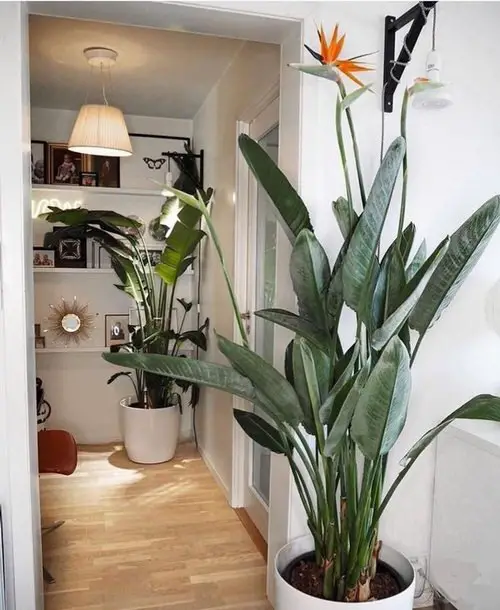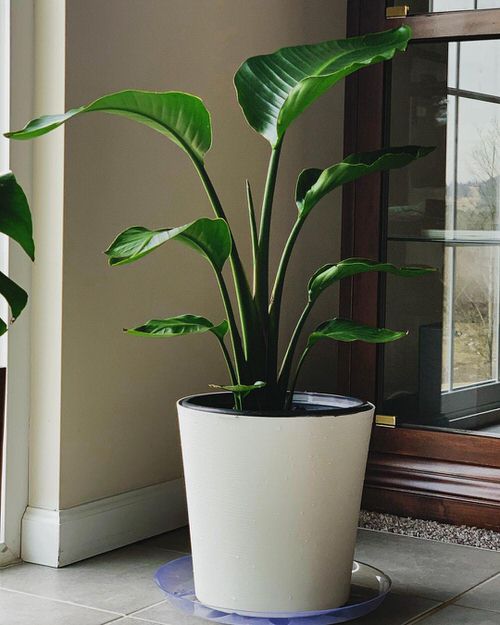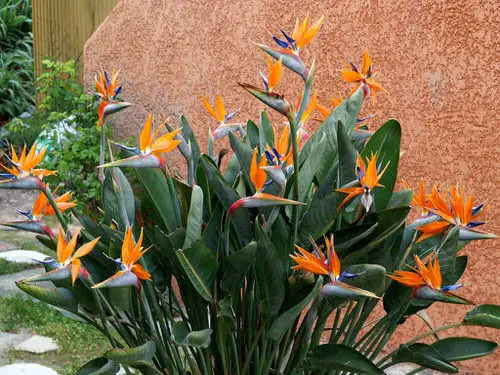Concerned about How to Get Bird of Paradise to Bloom? Follow our tips and tricks to ensure your plant flowers in all its glory!

Here are some top secrets on How to Get Bird of Paradise to Bloom! Use them to your advantage and make your plant full of flowers!
Learn how to get a snake plant to bloom here
Why Your Bird of Paradise is Not Flowering?

The most common reason that stops a strelitzia from flowering is its age and insufficient light. While this plant can tolerate low light, it needs at least four to six hours of direct light even indoors for adequate blooming.
Have a look at the best types of Bird of Paradise you can grow here
How Long It Takes for Bird of Paradise to Flower?

Bird of paradise takes 3-5 years to mature for flowering. Young plants do not bloom easily. Also, when the plant starts flowering, do not disturb it by repotting and allowing it to stay in the same container to promote more blossoms.
When Do Bird of Paradise Bloom?
Its beautiful, exotic flowers appear throughout the year in favorable warm climatic conditions, if the plant is mature enough. However, it generally flowers from fall to spring. The young ones may bloom even less from late winters and up to spring.
How to Get Bird of Paradise to Bloom?

1. Buy Mature Plants
Bird of paradise begins to flower when the plant becomes slightly old, usually after 3-5 years. Till then it compensates with its incredible banana-like foliage.
In case your plant is not blooming, maybe because it is too young. Wait and let the plant reach maturity to produce blossoms; else, buy a mature plant that is 3-4 years old.
While getting a new plant, ask nursery staff how old it is to get an idea!
2. Keep the Plant in the Same Pot in Which You Have Bought It
If you have bought a plant that’s healthy, growing well, and blooming, there’s no sense re-potting it suddenly into a beautiful and bigger container the moment you bring it home.
People have a misconception that transferring a new plant into a bigger pot, with a fresh growing medium, helps a plant grow. This is somewhat true, but it doesn’t apply to a plant that’s actively blooming or growing. Unless it is terribly root bound, you should not re-pot it.
Let the plant be in the same container in which it is flowering. Once it’s done blossoming, you can then transfer it but wait–don’t transplant it unless it’s pot-bound. Just follow this trick here!
3. Keep it in a Root Bound State
Bird of paradise flowers best when it’s in a root-bound state–densely packed, having more clumps together. Allowing the plant to live in the same pot for a long makes the flowering process faster as it then diverts its energy into growing more blooms rather than spending it forming more rhizomes.
A Tip: If the plant becomes too big for its container, only then transplant it to the one-size bigger planter.
4. Also, Do Not Plant it Too Deep
Here’s a quick tip—avoid planting strelitzia too deep. The top roots should be on the surface of the topsoil, slightly visible. This encourages this houseplant to flower profusely.
5. Mimic its Native Conditions
Do not forget to create conditions that mimic its natural environment. These plants are native to coastal areas of East South Africa and grow in warm tropical climates with a stable temperature range where they are also exposed to humidity and good air circulation.
Mimicking the same while growing these plants will drastically help them flower.
- Do not expose them to cold drafts or hot air and no sudden temperature fluctuations, too.
- Make sure they stay warm and the air around them becomes neither too dry.
6. Crane Flower Needs More Sunlight
Grow bird of paradise in a spot where it can receive plenty of sunlight. Shortage of adequate light is one of the main causes of the plant’s failure to bloom. Not just that, rotate your houseplant weekly so that it can soak light evenly from all parts.
Keeping it in direct sunlight for 4-6 hours daily will do wonders for flowering. In cold climates, you can shift it outdoors in summers but keep it in a shade in the afternoon.
7. Use High Phosphorus Fertilizer
As Phosphorus promotes flowering, buy a fertilizer with a high ‘P’ content. Find a product with an NPK 10-30-10. Do refer to the label for the right dosage and instructions.
Alternatively, you can also fertilize with your balanced fertilizer once in 14 days in weak strength.
8. Take Care of Watering and Humidity
Bird of paradise plants prefers to dry out between watering spells. Strike the right balance by watering the plant thoroughly when the topsoil goes dry.
9. Keep the Plant in a Balanced Temperature
If the temperature drops below 50 F (10 C) outdoors, move the outdoor bird of paradise plant inside your home. No blooms last at this point. Ensure to keep it in direct sunlight.
Note: You can grow the plant outdoors in warm frost-free climates.



What fabulous easy to follow tips and advice. Thankyou